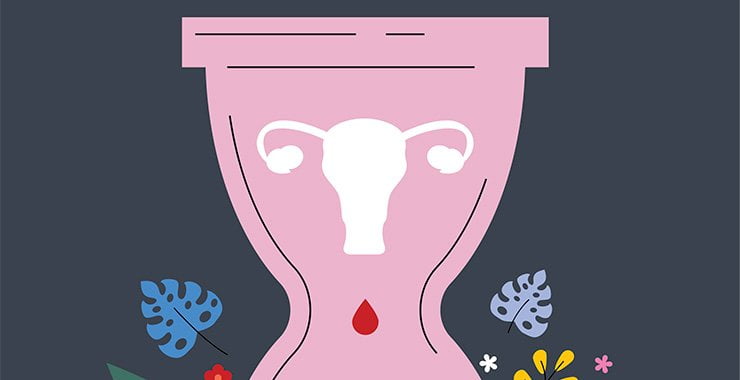Menopause is a natural and inevitable phase in a woman’s life, marking the end of her reproductive years. While this transition brings about various changes, one common issue that many women face during menopause is incontinence. Incontinence, the involuntary loss of urine, can significantly impact a woman’s quality of life. However, with the right understanding and targeted treatment strategies, menopause incontinence can be effectively managed. In this blog, we will explore the causes, types, and most importantly, the treatment options available for menopause-related incontinence.
Contents
- 1 Understanding Menopause Incontinence
- 2 Different Treatment Options for Menopause Incontinence
- 2.1 1. Behavioral Therapies for Menopausal Incontinence
- 2.2 2. Medications for Menopausal Incontinence
- 2.3 3. Medical Devices for Menopausal Incontinence
- 2.4 4. Surgical Interventions for Menopausal Incontinence
- 2.5 5. Biofeedback and Electrical Stimulation
- 2.6 6. Lifestyle and Dietary Changes
- 2.7 7. Percutaneous Tibial Nerve Stimulation (PTNS)
- 2.8 8. Radiofrequency Therapy
- 2.9 9. Injection Therapy
- 2.10 10. Acupuncture
- 2.11 11. Intravaginal Devices
- 2.12 12. Urethral Bulking Agents
- 2.13 13. Nutritional and Herbal Supplements
- 2.14 14. Hypnotherapy and Mind-Body Techniques
- 2.15 15. Laser Therapy
- 2.16 16. Yoga and Pelvic Floor Exercises
- 2.17 17. Self-Catheterization
- 2.18 18. Behavioral Modification Programs
- 3 Sources To Get Menopause Incontinence Treatment
- 4 Conclusion
Understanding Menopause Incontinence
Menopause is characterized by a decline in estrogen levels, which plays a crucial role in maintaining the health of the pelvic muscles and tissues. As estrogen decreases, these muscles weaken, leading to a range of symptoms, including incontinence. The three main types of incontinence associated with menopause are stress incontinence, urge incontinence, and mixed incontinence.
- Stress Incontinence: This type of incontinence occurs when pressure on the bladder increases, leading to urine leakage. Common triggers include coughing, sneezing, laughing, or any activity that puts stress on the pelvic floor muscles.
- Urge Incontinence: Often referred to as an overactive bladder, urge incontinence involves a sudden and intense urge to urinate, leading to involuntary leakage. Estrogen deficiency during menopause can contribute to bladder irritability and exacerbate this type of incontinence.
- Mixed Incontinence: This is a combination of stress and urge incontinence, where women experience symptoms of both types. It is essential to identify the predominant type to tailor the treatment approach effectively.
1. Behavioral Therapies for Menopausal Incontinence
Behavioral therapies play a crucial role in managing menopausal incontinence, helping women regain control over their bladder function. These approaches focus on lifestyle modifications and pelvic floor muscle training.
Lifestyle Modifications: Women experiencing menopausal incontinence can benefit from making certain lifestyle adjustments. Maintaining a healthy weight, avoiding bladder irritants like caffeine and spicy foods, and staying hydrated are essential. Timed voiding, where a woman schedules regular bathroom breaks, can help prevent sudden urges and accidents.
Pelvic Floor Muscle Training (PFMT): PFMT, also known as Kegel exercises, involves contracting and relaxing the pelvic floor muscles to strengthen them. These exercises improve the support to the bladder and urethra, reducing the severity of incontinence. A physical therapist specializing in pelvic floor health can guide proper technique and progression of exercises.
2. Medications for Menopausal Incontinence
Several medications can be prescribed to alleviate menopausal incontinence symptoms, targeting various underlying causes.
Estrogen Therapy: Hormone replacement therapy (HRT) with estrogen is commonly used to address incontinence related to menopause. Estrogen helps restore the integrity of the vaginal and urethral tissues, improving their function. This can be administered topically or systemically, depending on the individual’s needs.
Anticholinergic Medications: These drugs block the action of acetylcholine, a neurotransmitter involved in bladder muscle contractions. By reducing bladder muscle activity, anticholinergic medications can help control the urgency and frequency of urination. However, side effects such as dry mouth and constipation may limit their use.
Mirabegron: Mirabegron is a beta-3 adrenergic agonist that relaxes the bladder muscle, increasing its capacity to hold urine. It is an alternative for those who cannot tolerate or do not respond well to anticholinergic medications.
3. Medical Devices for Menopausal Incontinence
Innovative medical devices offer non-invasive or minimally invasive solutions for menopausal incontinence.
Vaginal Pessaries: Pessaries are supportive devices inserted into the vagina to provide structural support to the pelvic organs. They can be particularly beneficial for women experiencing stress incontinence by helping lift and support the bladder.
Urethral Inserts: These small, tampon-like devices are inserted into the urethra to block urine leakage during activities that trigger incontinence. Urethral inserts are temporary and can be used as needed.
4. Surgical Interventions for Menopausal Incontinence
When conservative approaches and medications fail to provide relief, surgical options may be considered.
Sling Procedures: Midurethral sling procedures involve placing a supportive mesh under the urethra to lift and provide additional support. This is commonly used for stress incontinence and has a high success rate.
Colposuspension: In this surgical procedure, the bladder neck, and urethra are lifted and stitched in place to improve their support. While less commonly performed today, it may be considered in specific cases.
Bladder Neck Suspension: This procedure involves repositioning and stabilizing the bladder neck to prevent stress incontinence. It is often performed using minimally invasive techniques.
5. Biofeedback and Electrical Stimulation
Biofeedback involves the use of sensors to monitor and provide feedback on pelvic floor muscle activity. Through visual or auditory cues, women can learn to control and strengthen their pelvic floor muscles effectively. Electrical stimulation, on the other hand, uses a mild electric current to stimulate and strengthen the pelvic muscles. Both biofeedback and electrical stimulation are non-invasive techniques that can be performed in a healthcare setting or at home under professional guidance.
6. Lifestyle and Dietary Changes

Certain lifestyle and dietary modifications can contribute to managing menopausal incontinence.
Dietary Modifications: Avoiding foods and beverages that irritate the bladder, such as caffeine, alcohol, and spicy foods, can help reduce symptoms of incontinence. Maintaining a well-balanced diet with adequate fiber can prevent constipation, which can exacerbate urinary incontinence.
Fluid Management: While staying hydrated is essential, spreading fluid intake evenly throughout the day and reducing intake before bedtime can help minimize nighttime incontinence. This approach can prevent excessive fluid in the bladder during sleep.
7. Percutaneous Tibial Nerve Stimulation (PTNS)
PTNS involves the insertion of a thin needle near the ankle, through which a mild electrical current stimulates the tibial nerve. This nerve connects to the sacral nerves, which play a role in bladder control. PTNS is typically performed in a healthcare setting and requires multiple sessions to achieve optimal results.
8. Radiofrequency Therapy
Radiofrequency therapy is a minimally invasive procedure that uses radiofrequency energy to heat and tighten the tissues of the vaginal and urethral area. This can improve the support of the bladder and reduce symptoms of stress incontinence. The procedure is performed on an outpatient basis and may provide long-lasting results.
9. Injection Therapy
For women with overactive bladder (OAB) symptoms, injection therapy may be considered. Botulinum toxin (Botox) injections into the bladder muscle can help relax an overactive bladder, reducing the urgency and frequency of urination. This procedure is typically reserved for cases that do not respond to other treatments.
10. Acupuncture
Acupuncture, a traditional Chinese medicine practice, involves the insertion of thin needles into specific points on the body. Some studies suggest that acupuncture may help improve symptoms of urinary incontinence by modulating the nervous system and promoting better pelvic floor muscle function. However, more research is needed to establish its effectiveness fully.
11. Intravaginal Devices
Intravaginal devices, such as vaginal cones or weights, are designed to enhance pelvic floor muscle strength and coordination. These devices are inserted into the vagina, and women perform specific pelvic floor muscle exercises while the device is in place. This method helps improve muscle tone over time, reducing symptoms of stress incontinence. Vaginal cones come in different weights, allowing for progression as the pelvic floor muscles become stronger.
12. Urethral Bulking Agents
For women with stress urinary incontinence, urethral bulking agents may be considered. These substances, often in the form of injections, are introduced into the tissues surrounding the urethra to add bulk and improve closure. This minimally invasive procedure can provide temporary relief and may be suitable for those who prefer non-surgical options.
13. Nutritional and Herbal Supplements

Certain nutritional and herbal supplements are believed to have potential benefits for managing menopausal incontinence. For example, studies have explored the use of pumpkin seed extract, cranberry extract, and soy isoflavones for their potential impact on urinary function. While more research is needed to establish their effectiveness conclusively, some women may find these supplements complementary to their overall management plan.
14. Hypnotherapy and Mind-Body Techniques
Mind-body techniques, including hypnotherapy, mindfulness, and guided imagery, can be valuable in addressing the emotional and psychological aspects of incontinence. Stress and anxiety can exacerbate symptoms, and these approaches aim to promote relaxation and mental well-being. While not a standalone treatment, incorporating mind-body techniques into a comprehensive management plan may contribute to overall improvement.
15. Laser Therapy
Laser therapy, specifically fractional laser therapy, has been explored as a potential treatment for menopausal symptoms, including urinary incontinence. This non-invasive procedure involves the use of laser energy to stimulate collagen production in the vaginal and urethral tissues, improving elasticity and support. While more research is needed to establish its long-term efficacy, some women have reported improvements in urinary symptoms.
16. Yoga and Pelvic Floor Exercises
Yoga, with its focus on breath control, flexibility, and mindful movement, can complement traditional treatments for menopausal incontinence. Specific yoga poses and pelvic floor exercises incorporated into a routine may help strengthen the pelvic floor muscles and improve overall pelvic health. Classes designed for women experiencing incontinence can guide safe and effective practices.
17. Self-Catheterization
For women with difficulty emptying their bladder, intermittent self-catheterization may be recommended. This involves using a catheter to empty the bladder at regular intervals. While it may sound intimidating, proper education and guidance from healthcare professionals can make this a manageable and effective approach for certain types of urinary dysfunction.
18. Behavioral Modification Programs
Structured behavioral modification programs, often conducted by healthcare professionals, involve comprehensive assessments of bladder habits, fluid intake, and lifestyle factors contributing to incontinence. These programs may include bladder training, habit retraining, and strategies for managing urgency and frequency effectively.
Conclusion
Menopause incontinence is a common but manageable condition that requires a personalized approach to treatment. By combining lifestyle modifications, behavioral therapies, medical interventions, and, when necessary, surgical procedures, women can regain control over their bladder function and improve their overall quality of life during and after menopause. Consulting with a healthcare professional is crucial to determine the treatment method.
If you are facing menopause-related issues, menopause treatment at HerMantra can help. Book your free trial online menopause treatment session now.


